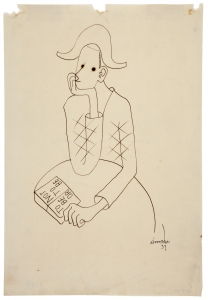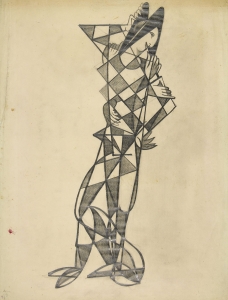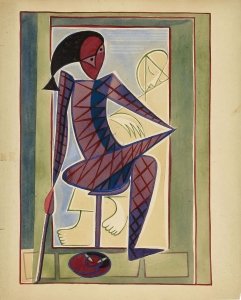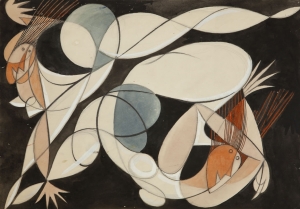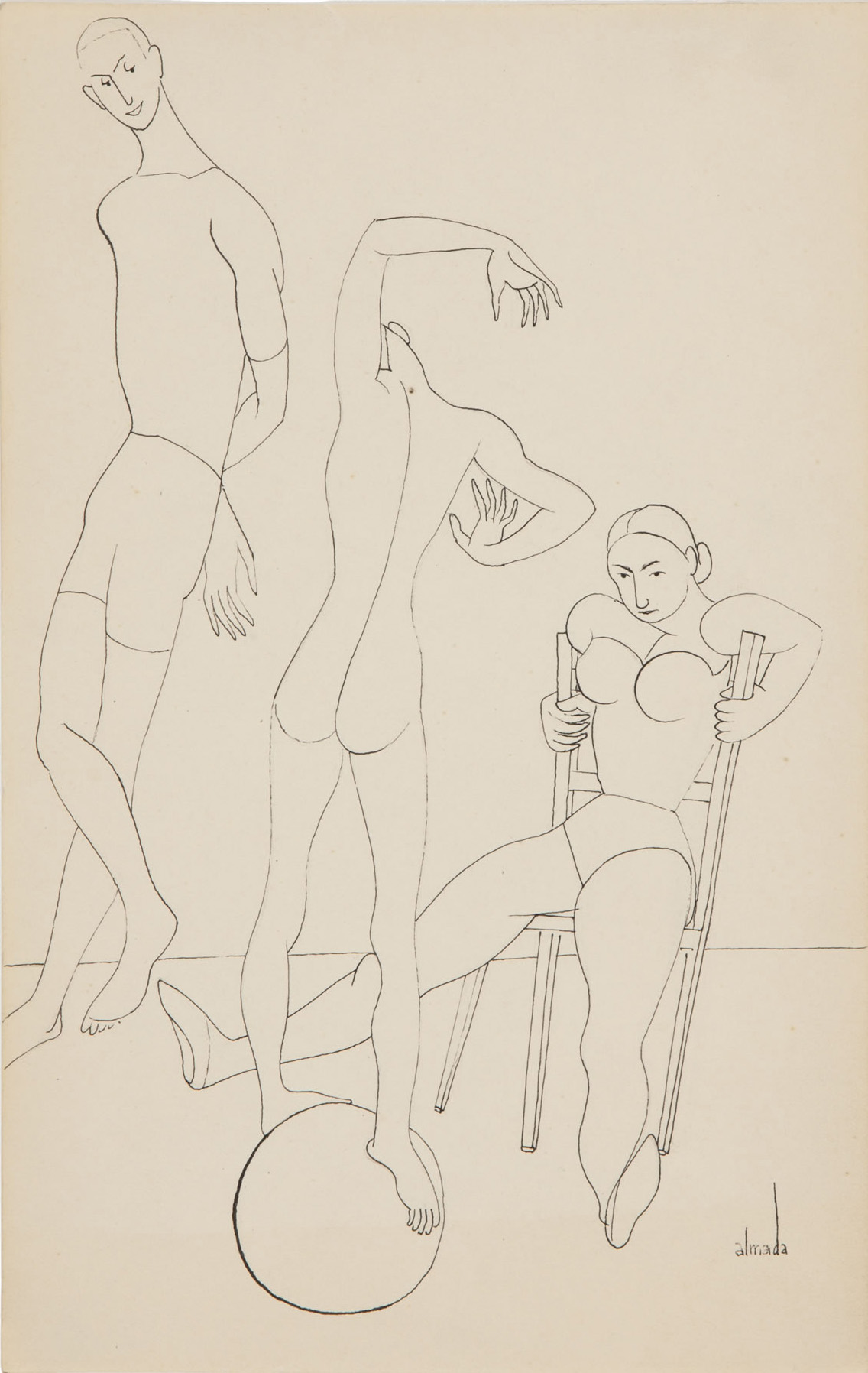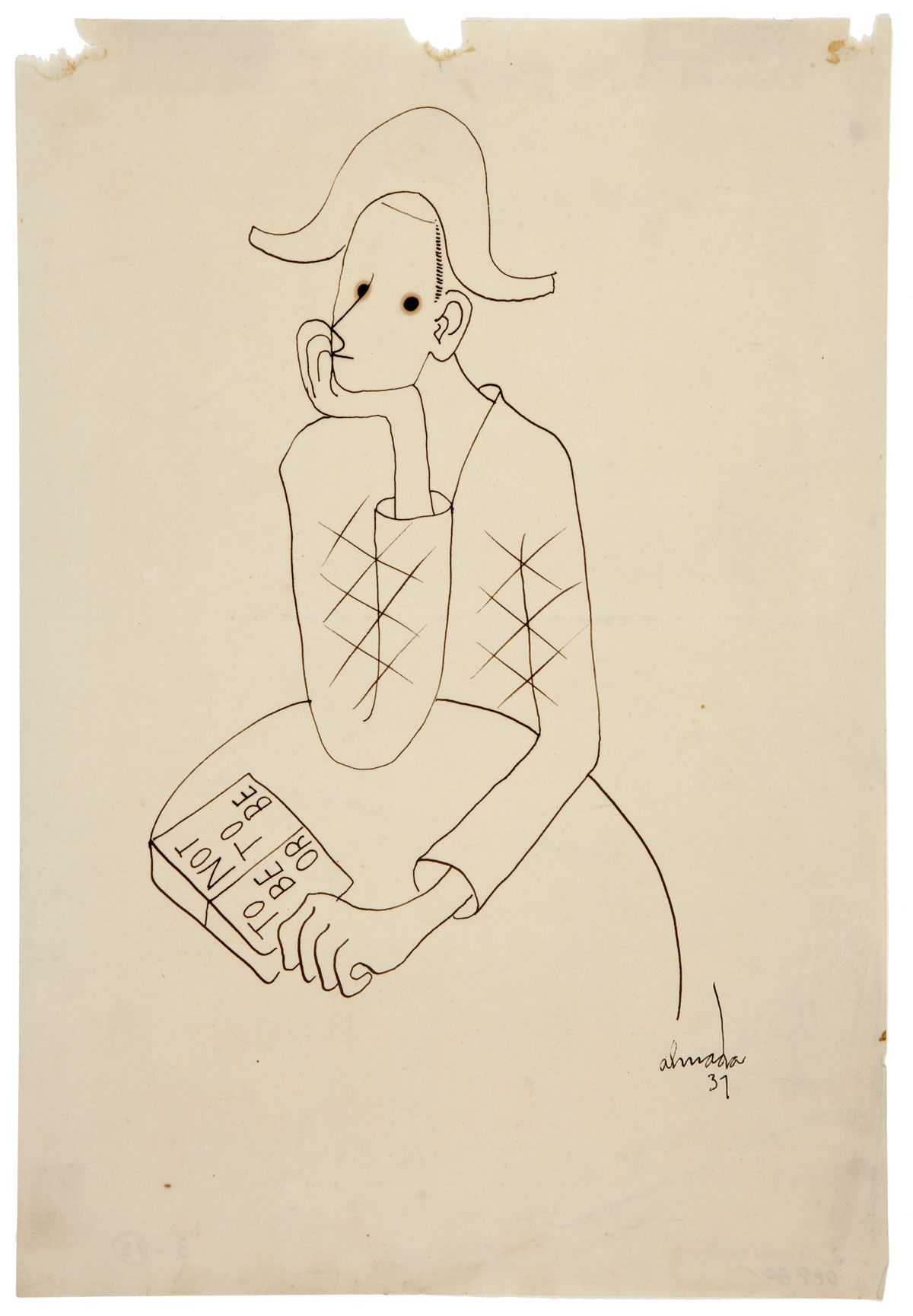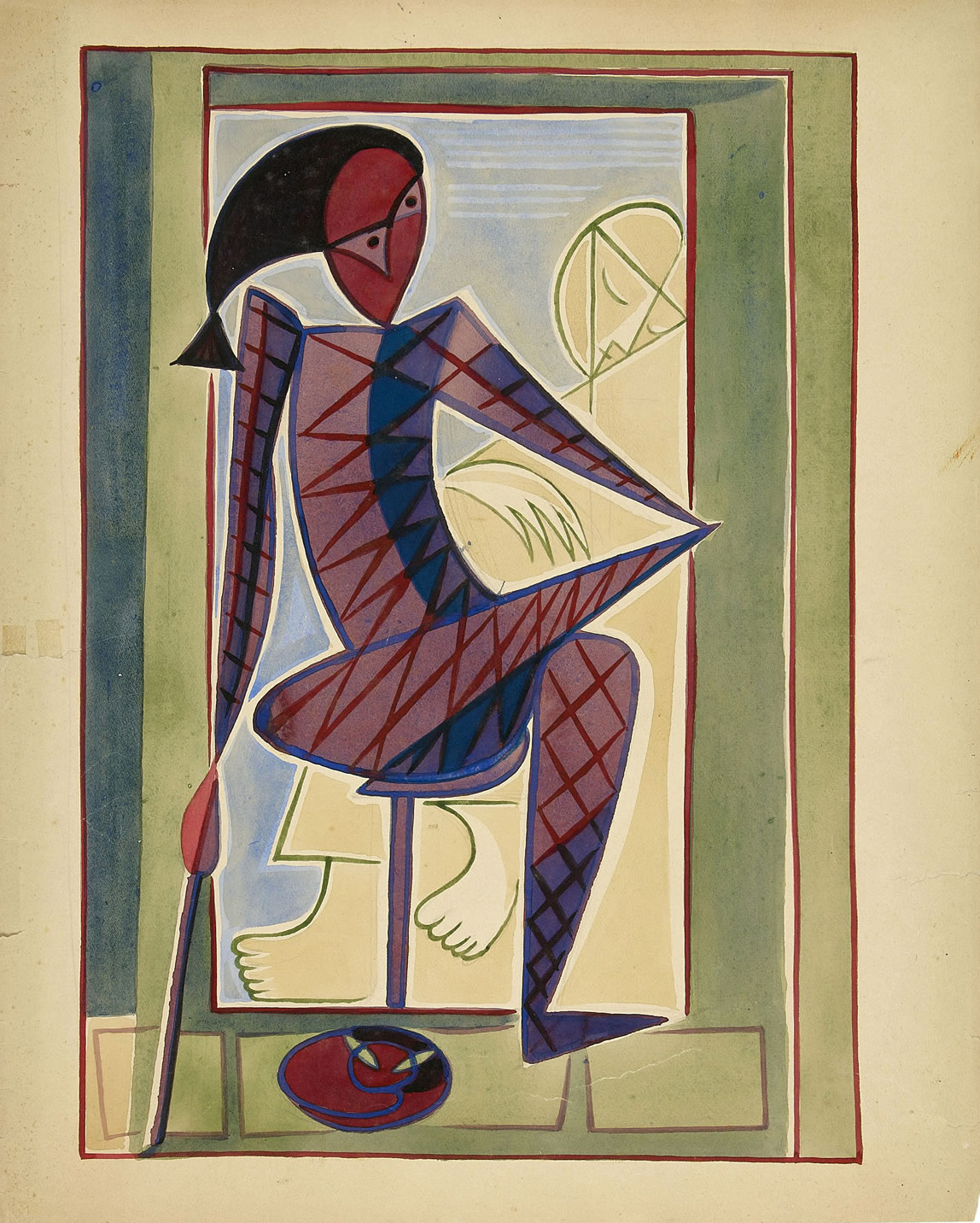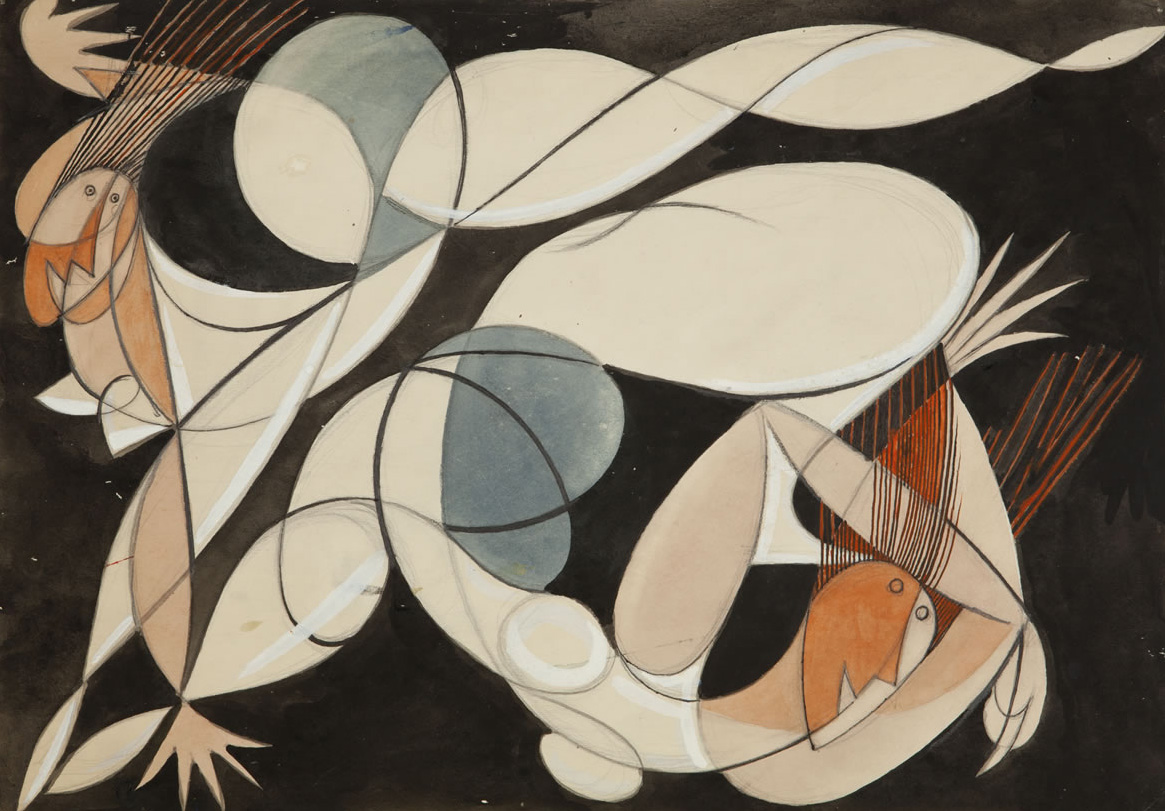

Saltimbanchi
From the beginning of the 20th century, the circus became a particularly important theme for artists in literature and painting.
The Saltimbanchi [Street acrobats] were poor, nomadic figures who, although popular, usually lived at the margins of society and performed for entertainment and amusement, but also to parody social order. They had been elected by artists as the denaturalised and exaggerated emblem of the humanity they sought to represent, in opposition to symbolism, naturalism and the haute bourgeoisie portrait that characterised a large part of the painting dominant in the 19th century.
We can find the Saltimbanco [street acrobat] in the Commedia dell’arte, a comical theatre with roots in 16th century Italian carnival, performed by masked actors whose role was to represent emotions rather than to play any specific character. Pierrot, Harlequin, Columbina and Pierrette became recurring themes in Almada Negreiros’s paintings, drawings and texts; through them he could represent a some of human relations, the status of art and the condition of the artist himself.

